Politics
Poland downs drones in its airspace, becoming first Nato member to fire during Ukraine war
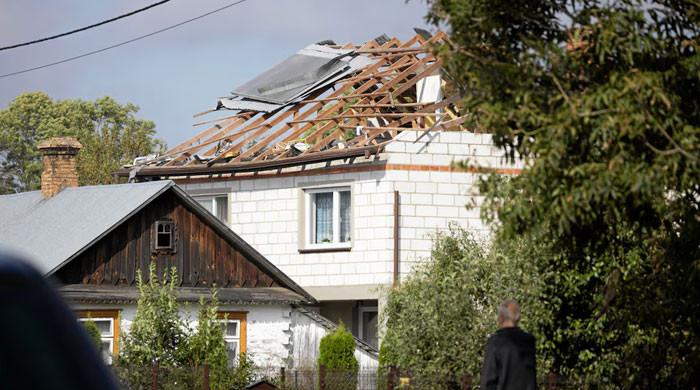
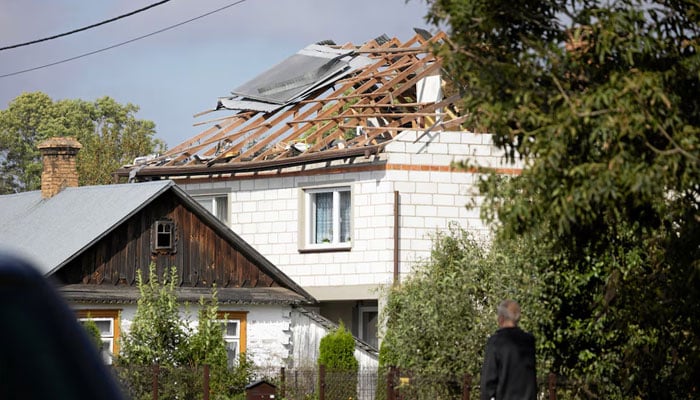
- Drone crashes into pensioner’s house in eastern Polish village.
- Polish premier says it was closest they’ve been to open conflict.
- Nato chief calls incident absolutely reckless, dangerous.
Poland shot down suspected Russian drones in its airspace on Wednesday with the backing of military aircraft from its Nato allies, the first time a member of the Western military alliance is known to have fired shots during Russia’s war in Ukraine.
Polish Prime Minister Donald Tusk told parliament it was “the closest we have been to open conflict since World War Two”, although he also said he had “no reason to believe we’re on the brink of war”.
Polish F-16 fighter jets, Dutch F-35s, Italian AWACS surveillance planes and Nato mid-air refuelling aircraft scrambled in an operation to shoot down drones that began entering Polish airspace on Tuesday evening and kept coming until morning, officials said.
One drone smashed into Tomasz Wesolowski’s two-storey brick house in the eastern Polish village of Wyryki-Wola at 6:30am while he was downstairs watching news about the incursion on TV.
The roof was destroyed and debris was strewn across the bedroom. Wesolowski told Reuters the house “needs to be demolished”.
A blackened spot in a black field elsewhere in southeastern Poland showed where other drones had fallen.
Moscow denied responsibility for the incident, with a senior diplomat in Poland saying the drones had come from the direction of Ukraine. Russia’s defence ministry said its drones had carried out a major attack on military facilities in western Ukraine but it had not planned to hit any targets in Poland.
The leaders of France, Britain, Germany and Canada were among Nato leaders to condemn the Russian incursion in strong terms.
There was no immediate statement from Washington. The US Air Force general serving as the top Nato commander, Alexus Grynkewich, said the alliance had “responded quickly and decisively to the situation, demonstrating our capability and resolve to defend allied territory”.
European leaders, who have lately been trying to persuade US President Donald Trump to join them in tightening sanctions on Russia and boosting support for Kyiv, said it justified a collective response.
Poland said 19 objects had entered its airspace during a large Russian air attack on Ukraine, and that it had shot down those that posed a threat.
Tusk called the incident a “large-scale provocation” and said he had activated Article Four of Nato’s treaty, under which alliance members can demand consultations with their allies.
Andrey Ordash, Russia’s charge d’affaires in Poland, was cited by RIA state news agency as calling accusations of an incursion “groundless” and said Poland had not given any evidence that the drones shot down were of Russian origin.
The Kremlin declined to comment directly on the incident but spokesperson Dmitry Peskov said the EU and Nato “accuse Russia of provocations on a daily basis. Most of the time without even trying to present at least some kind of argument.”
During the incident, the Operational Command of the Polish Armed Forces urged residents to stay at home, with three eastern regions at particular risk.
Several Polish airports were temporarily closed, including one that has been used as the main access point for Western officials and supplies travelling to Ukraine over land.
Nato chief Mark Rutte said that a full assessment of the incident had not yet been made but added that, “whether it was intentionally or not, it is absolutely reckless, it is absolutely dangerous.”
Countries bordering Ukraine have reported occasional Russian missiles or drones entering their airspace in the past during the war, but not on such a large scale, and they are not known to have shot them down. Two people were killed in Poland in 2022 by a Ukrainian air defence missile that went astray.
Since Nato’s creation in 1949, Article 4 has been invoked seven times, most recently in February 2022 following Russia’s invasion of Ukraine.
EU calls for action
“Russia’s war is escalating, not ending. We must raise the cost on Moscow, strengthen support for Ukraine, and invest in Europe’s defence,” the EU’s top diplomat Kaja Kallas said.
Early indications suggested the entry of Russian drones into European airspace was intentional, not accidental, she added in her post on X.
Ukrainian President Volodymyr Zelenskiy said Russia used 415 drones and 40 missiles in attacks on Ukraine overnight, adding that at least eight Iranian-made shahed drones had been aimed towards Poland.
“An extremely dangerous precedent for Europe,” he said. “A strong response is needed – and it can only be a joint response by all partners: Ukraine, Poland, all Europeans, the United States.”
Russia has long said it has no intention of stoking a war with Nato and that Western European countries suggesting it is a threat were trying to worsen relations.
European Commission President Ursula von der Leyen called for more sanctions on Russia, and said the EU was preparing sanctions on ‘shadow fleet’ tankers that transport its oil and third countries that buy it.
Trump, who warmly welcomed Putin in Alaska at a summit in August, said over the weekend he was ready to move to a second phase of sanctioning Russia after months of talks about a peace deal.
Politics
Hurricane Melissa’s death toll climbs to 44, storm churns north
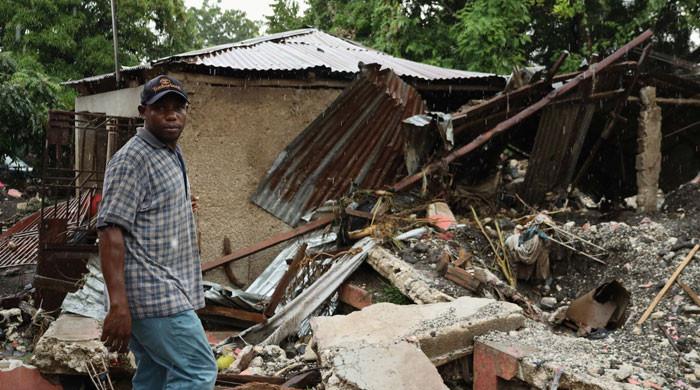
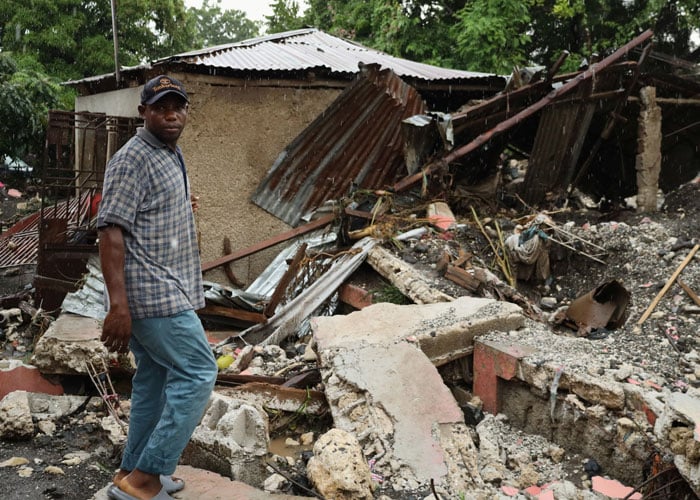
- At least 25 confirmed dead in Haiti, 19 in Jamaica.
- Forecaster estimates up to $52 billion in damages.
- Melissa among strongest-ever storms at landfall.
PORT-AU-PRINCE/KINGSTON/HAVANA: Hurricane Melissa’s confirmed death toll climbed to 44 on Thursday, according to official reports, after wreaking destruction across much of the northern Caribbean and picking up speed as it headed toward Bermuda.
Jamaica’s information minister told Reuters at least 19 deaths had been confirmed, but authorities were continuing search and rescue efforts. The storm left hundreds of thousands without power, ripped roofs of buildings and scattered fields with rubble.
Jamaica’s military has called on reserve personnel to report for duty to help with relief and rescue operations.
Melissa made landfall in southwestern Jamaica on Tuesday as a powerful Category 5 hurricane, the Caribbean nation’s strongest-ever storm to directly hit its shores, and the first major hurricane to do so since 1988.
Windspeeds were well above the minimum level for the strongest hurricane classification. Forecasters at AccuWeather said it tied in second place for strongest-ever Atlantic hurricane on record in terms of windspeed when in struck land.
The forecaster estimated $48 billion to $52 billion in damage and economic loss across the western Caribbean.
Authorities in Haiti, which was not directly hit but nevertheless suffered days of torrential rains from the slow-moving storm, reported at least 25 deaths, mostly in the southern town of Petit-Goave when a river burst its banks.
A river also caved in and carried off part of a national highway, local newspaper Le Nouvelliste reported. The road, which had been weakened by last year’s Hurricane Beryl, connected to the nearby city of Jacmel.
Melissa also hit eastern Cuba, where some 735,000 evacuated, but as of Thursday, no deaths were reported there, despite extensive damage to homes and crops.
At 8pm (0000 GMT), Melissa was a Category 1 storm 409 km (254 miles) south-west of the North Atlantic British island territory, where hurricane conditions were expected by nightfall even as Melissa’s eye skirts north-west.
Melissa was packing maximum sustained winds of 105 mph (169 kph).
Residents in Bermuda however remained calm as the storm was expected to give the island a relatively wide berth. Authorities said they would close its causeway Thursday night and shut schools and ferries on Friday “out of an abundance of caution.”
In the Bahamas, which Melissa cut through Wednesday night, authorities lifted storm warnings but did not give the “all clear”. An official said authorities expected to decide by Saturday whether it was safe for the hundreds of people who evacuated off affected islands to return to their homes.
Wading barefoot through mud
The front page of Thursday’s Jamaica Observer newspaper read: “DEVASTATION.”
Densely populated Kingston was spared the worst damage. Its main airport was set to reopen on Thursday, as was the capital’s port. Relief flights and aid had begun to flow into Jamaica’s airports, authorities said.
But across the country, more than 130 roads remained blocked by trees, debris and electric lines, authorities said, forcing the military to clear roadways on foot into isolated areas, with ambulances following close behind.
Satellite imagery showed swaths of trees and homes devastated in the hardest-hit areas of Jamaica, sparse remaining greenery defoliated and most structures destroyed.
In a neighbourhood of the island’s Montego Bay, 77-year-old Alfred Hines waded barefoot through thick mud and debris as he described his narrow escape from the rising floodwaters.
“At one stage, I see the water at my waist and (after) about 10 minutes time, I see it around my neck here and I make my escape,” he told Reuters on Wednesday.
“I just want to forget it and things come back to normal.”
In western parts of the island, people crowded by supermarkets and gas stations to fill up on supplies.
“Montego Bay hasn’t got any petrol. Most of the petrol stations are down,” British tourist Chevelle Fitzgerald told Reuters, adding it took her at least six hours to cross the 174 km (108 miles) to Jamaica’s capital.
“The highway was closed. You had some blockage on the road and trees falling down,” she said.
Over 70% of electrical customers in Jamaica remained without power as of Thursday morning, said Energy Minister Daryl Vaz, with power lines felled across the island’s roadways.
Many schools remained without power or water, officials in the capital Kingston said.
Immediate humanitarian aid
Scientists say hurricanes are intensifying faster with greater frequency as a result of warming ocean waters caused by greenhouse gas emissions. Many Caribbean leaders have called on wealthy, heavy-polluting nations to provide reparations in the form of aid or debt relief.
Despite the U.N. setting up a fund for developing nations to quickly access reliable financing for more extreme weather events in 2023, donations have not met targets.
U.S. forecaster AccuWeather said Melissa was the third most-intense hurricane observed in the Caribbean, as well as its slowest-moving, compounding damages for affected areas.
U.S. search and rescue teams were headed for Jamaica on Thursday to assist in recovery efforts, Jamaican authorities said. U.S. Secretary of State Marco Rubio said the U.S. was prepared to offer “immediate humanitarian aid” to the people of Cuba, a long-time U.S. foe.
Authorities in Cuba – which Melissa struck in the night as a Category 3 storm – said they were “awaiting clarification on how and in what way they are willing to assist.”
At least 241 Cuban communities remained isolated and without communications on Wednesday following the storm’s passage across Santiago province, according to preliminary media reports, affecting as many as 140,000 residents.
Residents of Santiago, Cuba’s second-largest city, began returning to repair their homes. Authorities had evacuated 735,000 people to shelters outside the hurricane’s cone and relocated tourists in northern cays to inland hotels.
Politics
US grants India six-month sanctions waiver to run Iran’s Chabahar port, says New Delhi
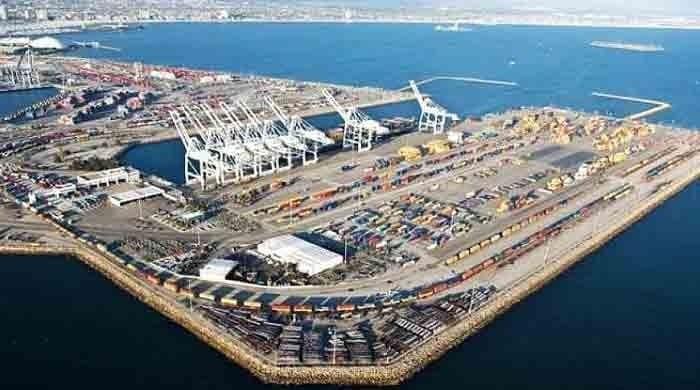
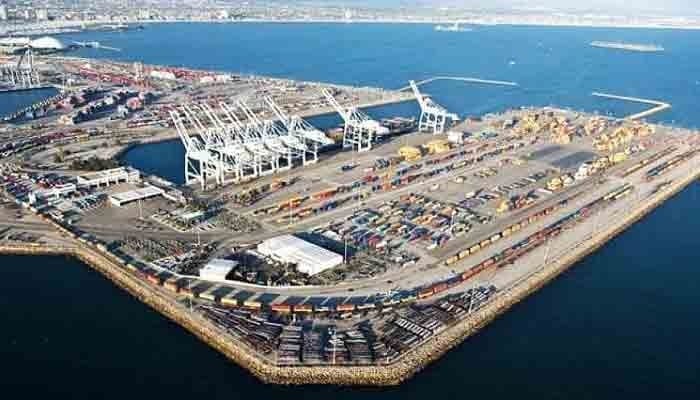
- India says exemption will boost regional trade connectivity.
- Indian refiners are now cutting Russian oil imports.
- Jaiswal says India continuing talks with Trump admin on trade deal.
The US has granted India a six-month sanctions waiver to operatethe Iranian port of Chabahar, India said on Thursday, boosting New Delhi’s effort to enhance trade with Afghanistan and Central Asian countries bypassing its rival Pakistan.
India signed a 10-year contract with Iran last year to develop and operate the port and this month stepped up its ties with Taliban-run Afghanistan by reopening its embassy in Kabul that was shut after the Islamist group seized power in 2021 following the withdrawal of US-led NATO forces.
The port on Iran’s southeastern Gulf of Oman coast was initially planned with a rail link to Afghanistan for building the landlocked country’s economy through trade and reducing Kabul’s dependence on the Pakistani port of Karachi.
The waiver move followed word by US President Donald Trump this week that he wanted to reach a trade deal with India – signalling a thaw in relations that soured to their lowest point in decades after he doubled tariffs on Indian imports to 50% as punishment for Indian purchases of Russian oil.
Indian refiners are now cutting Russian oil imports following Washington’s imposition last week of sanctions on Moscow’s top two crude exporters, Rosneft and Lukoil.
“I can confirm that we have been granted an exemption for a six-month period,” Indian foreign ministry spokesperson Randhir Jaiswal told a weekly news briefing, referring to the port.
He also said India was continuing talks with the Trump administration on a bilateral trade deal.
Washington had last month revoked the sanctions waiver for Chabahar, initially granted in 2018, as part of its effort to put “maximum pressure” on Iran to counter what it called the Islamic Republic’s destabilising activities in support of its nuclear and ballistic missile programmes.
An Indian official, speaking on condition of anonymity, said the US sanctions waiver had taken effect on Wednesday. The US embassy in New Delhi did not immediately respond to a request for comment.
Politics
’67’ crowned ‘Word of the Year’


A double-digit combination set the social media sphere ablaze among teens in 2025, leaving parents and teachers befuddled — and now it has officially been crowned Dictionary.com’s “Word of the Year”: 67.
But even the organisation that unveiled the winning word — pronounced “six-seven” and never “sixty-seven” — admitted it was not exactly sure about its meaning.
“You might be feeling a familiar vexation at the sight of these two formerly innocuous numerals,” Dictionary.com said, addressing parents as it announced the winner this week.
Members of Gen Alpha, it added, might be “smirking at the thought of adults once again struggling to make sense of your notoriously slippery slang.”
Dictionary.com said the origin of the word might be traced to “Doot Doot (6 7),” a song by the US rapper Skrilla.
Use of the word went viral in schools and on social media this year. It can be taken to mean a variety of things, with context, tone and absurdity all playing a role in determining its definition in the moment.
“67” beat out some stiff competition from other words that were short-listed for “Word of the Year.” These included “broligarchy,” “Gen Z stare,” and an entry from the world of emoticons — the dynamite emoji.
Its use exploded online with news of the engagement between pop superstar Taylor Swift and American football star Travis Kelce, as it was used as shorthand to refer to the “TNT” couple.
-
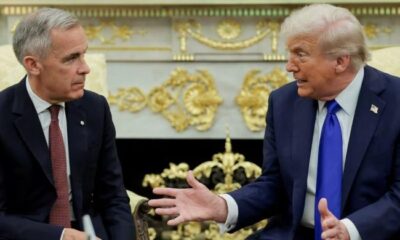
 Politics6 days ago
Politics6 days agoTrump slams ‘dirty’ Canada despite withdrawal of Reagan ad
-

 Tech1 week ago
Tech1 week agoTurning pollution into clean fuel with stable methane production from carbon dioxide
-

 Sports7 days ago
Sports7 days agoAlleged mob ties in NBA scandal recall La Cosa Nostra’s long shadow over sports
-

 Tech7 days ago
Tech7 days agoDefect passivation strategy sets new performance benchmark for Sb₂S₃ solar cells
-

 Business1 week ago
Business1 week agoJLR shutdown after cyber hack drives slump in UK car production
-

 Business1 week ago
Business1 week agoAssaults on rail network more than triple in 10 years
-

 Sports1 week ago
Sports1 week agoNBA legend Chauncey Billups, Heat’s Terry Rozier arrested as part of FBI gambling probe
-

 Sports1 week ago
Sports1 week agoPakistan, Saudi Arabia join hands to promote football development






